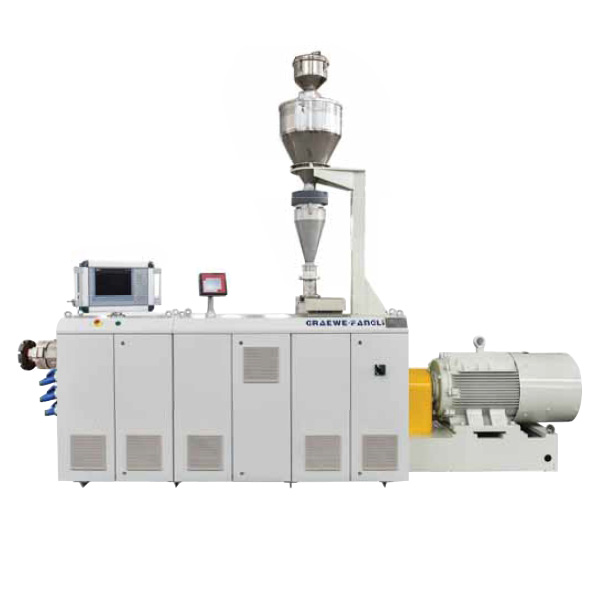- English
- Español
- Português
- русский
- Français
- 日本語
- Deutsch
- tiếng Việt
- Italiano
- Nederlands
- ภาษาไทย
- Polski
- 한국어
- Svenska
- magyar
- Malay
- বাংলা ভাষার
- Dansk
- Suomi
- हिन्दी
- Pilipino
- Türkçe
- Gaeilge
- العربية
- Indonesia
- Norsk
- تمل
- český
- ελληνικά
- український
- Javanese
- فارسی
- தமிழ்
- తెలుగు
- नेपाली
- Burmese
- български
- ລາວ
- Latine
- Қазақша
- Euskal
- Azərbaycan
- Slovenský jazyk
- Македонски
- Lietuvos
- Eesti Keel
- Română
- Slovenski
- मराठी
- Srpski језик
what environment need to use Single-screw Extruder UL
2025-01-23
The environment required for operating a Single-Screw Extruder (UL-rated)is critical for ensuring safety, efficiency, and product quality. Below are the key considerations for setting up such an environment:
1. Electrical Environment
UL-Rated Components: Ensure all electrical components, including controls and wiring, comply with UL standards to meet safety regulations.
Voltage Supply: The extruder should have access to the appropriate voltage and power supply as specified by the manufacturer (e.g., 220V, 380V, or 480V, three-phase).
Grounding: Proper grounding is essential to avoid electrical hazards.
Circuit Protection: Install overcurrent and surge protection devices to prevent damage to the extruder and control panel.
2. Thermal Management
Temperature Control: Maintain an ambient temperature within the recommended range (usually 20–30°C or 68–86°F) for consistent performance.
Ventilation: Ensure adequate ventilation or air conditioning to dissipate heat generated by the extruder's motor and heater bands.
3. Material Handling
Dust-Free Environment: Keep the area free of dust and contaminants to ensure clean material feeding and reduce wear on the equipment.
Storage Space: Allocate space for storing raw materials (e.g., pellets, granules) in a dry, controlled environment to avoid contamination or degradation.
4. Safety Measures
Emergency Shutoff: Install emergency stop buttons near the extruder for quick access.
Operator Safety: Use guarding and shields around moving parts, and ensure operators wear proper personal protective equipment (PPE).
Fire Safety: Place fire extinguishers near the extruder in case of electrical or material-related fires.
5. Structural Requirements
Foundation: The extruder should be placed on a sturdy, vibration-free surface, such as a reinforced concrete floor.
Space: Allow enough space around the extruder for maintenance and cleaning.
Noise Reduction: Install the machine in an area with noise-dampening measures if it operates at high noise levels.
6. Process-Specific Considerations
Cooling Systems: Ensure access to a water or air cooling system if required for the barrel or die.
Exhaust Ventilation: Use proper exhaust systems to remove fumes or gases produced during extrusion.
Calibration Equipment: Include downstream equipment (e.g., cooling tanks, haul-offs, or cutters) compatible with the extruder.
7. Compliance and Certification
UL Compliance: Verify the extruder and its components meet UL safety standards.
Local Regulations: Ensure compliance with local codes for electrical safety, environmental standards, and workplace safety.
8. Maintenance and Accessibility
Tool Access: Keep tools and spare parts readily available for repairs or adjustments.
Lubrication Points: Ensure easy access to lubrication points for routine maintenance.
Operator Training: Train operators on safe and efficient use of the extruder.
By following these guidelines, you can ensure that your Single-Screw Extruder (UL-rated) operates effectively, safely, and in compliance with standards.




